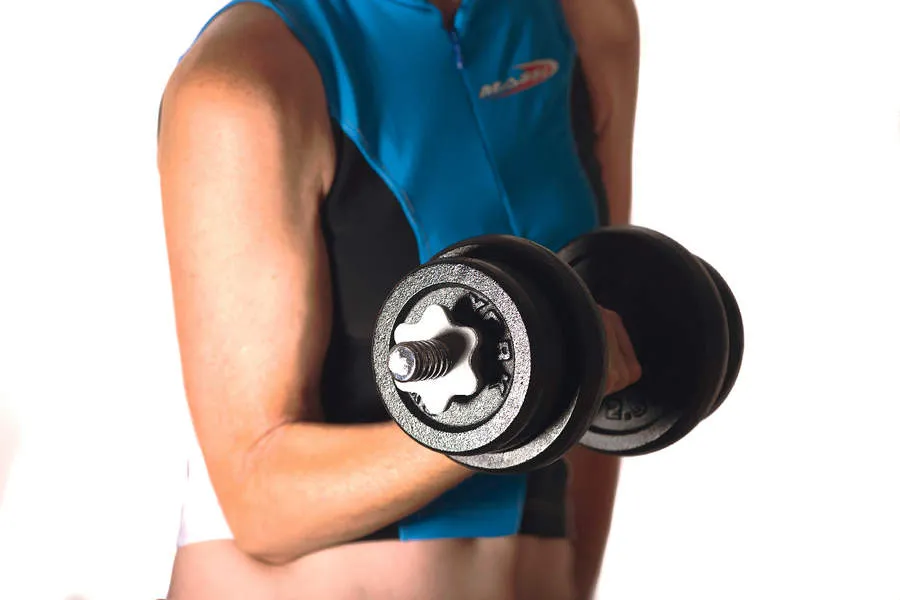Over the next few months there will be at least a couple of days when a glance out of the window makes you want to bin the training ride. Like it or not, the gym is the perfect setting for keeping your training going.
Strength-based circuit training offers fantastic benefits for cyclists – it will boost your strength, power and explosive precision. It also works muscles that cycling doesn’t – those in your upper body.
Strong abdominal muscles, for instance, are vital for maintaining a good position during long rides or time trials, while increasing the strength in your arms and chest will help your climbing.
Also, cycling is a low impact sport, so it does very little to improve, and some studies even suggest can be detrimental to, bone density. In contrast, weight training will help strengthen your skeleton. Better all-round strength will also improve your chances of avoiding injury.
The key during these poor-weather months is to achieve the best possible strength and power improvements from your sessions without compromising your aerobic fitness. To do this, strength workouts need to train muscle groups in ways that directly benefit riding.
Varying the weight used and the intensity will also yield slightly different results. To build your endurance strength, use lighter weights that you can lift 12-20 times in three to five sets. If you’re aiming to build outright strength instead, you want a weight you can just lift up to 12 times over three sets. With that in mind, mix and match the following exercises twice a week for the ultimate winter workout.
Warning: Ensure you undertake a light 5-10 minute whole-body warm-up before carrying out these exercises. If you’re unsure of how to perform any of these movements, consult a personal trainer or gym instructor.
Hanging Chest Heave
Boosts both upper body and core muscles
3 sets x 10 reps

Hang from a fixed bar with your feet out straight and heels on floor. Maintain your body position and pull yourself towards the bar. Finally, lower yourself under control back to the starting position.
Dead lift
Boosts all major muscles
3-5 sets x 6-10 reps, 20-60kg weight
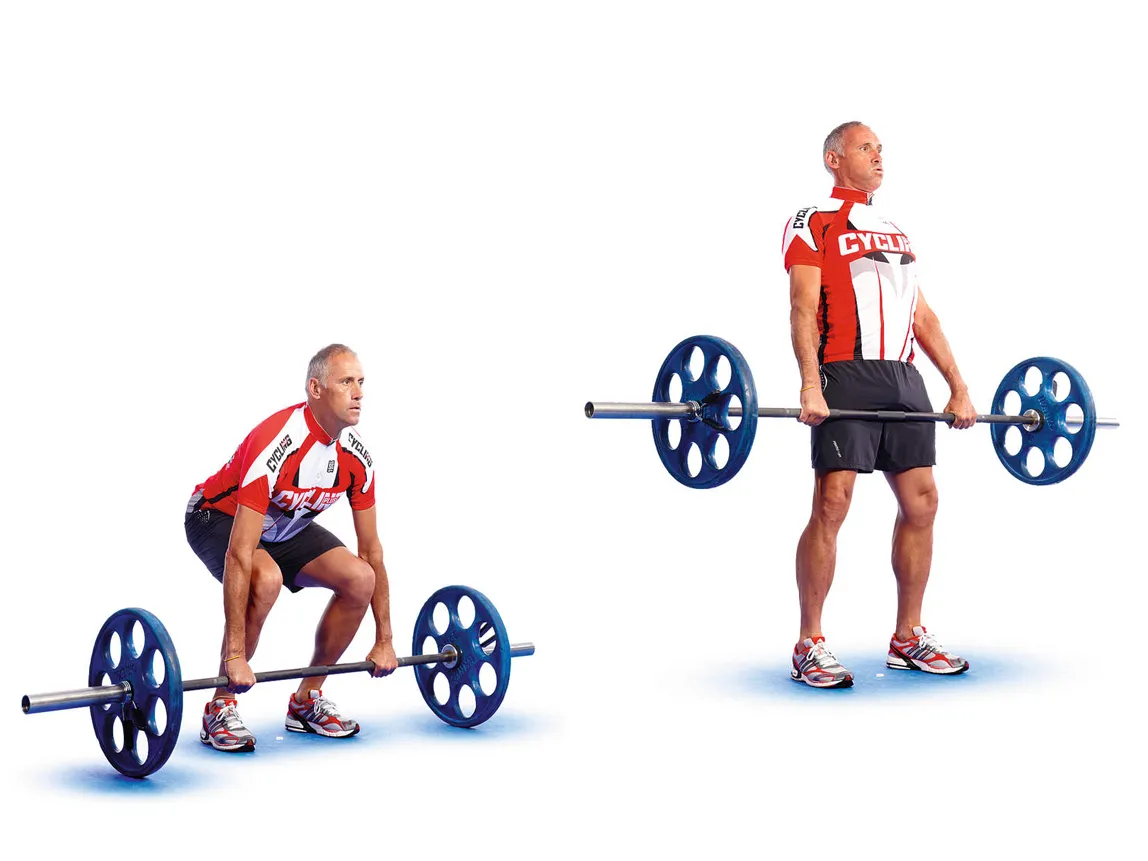
Use a heavy weight for this exercise, but load up 50 percent of your full training weight to practise your technique first. To build outright strength, perform fewer reps at a higher weight.
To perform the lift, stand with your feet a shoulder width apart and grip the bar. Contract your abdominal muscles to maintain your back position, raise the bar by straightening your legs and keep the bar close to your shins on the way up. Breathe out once you’re in an upright position, then lower the bar and repeat.
Press-up to rotational twist
Boosts upper body and improves mobility in the lower back
3 sets x 10 reps

This one's a toughie. Using a light dumbbell, do a press-up and on the upwards push, raise your left arm, rotating it round until it’s vertical and straight above your body. Repeat the process on the right side, alternating between the two for each set of 10 reps.
Hanging clean
Boosts all major muscle groups with a dynamic plyometric movement
3 sets x 6-10 reps, 20-60kg weight
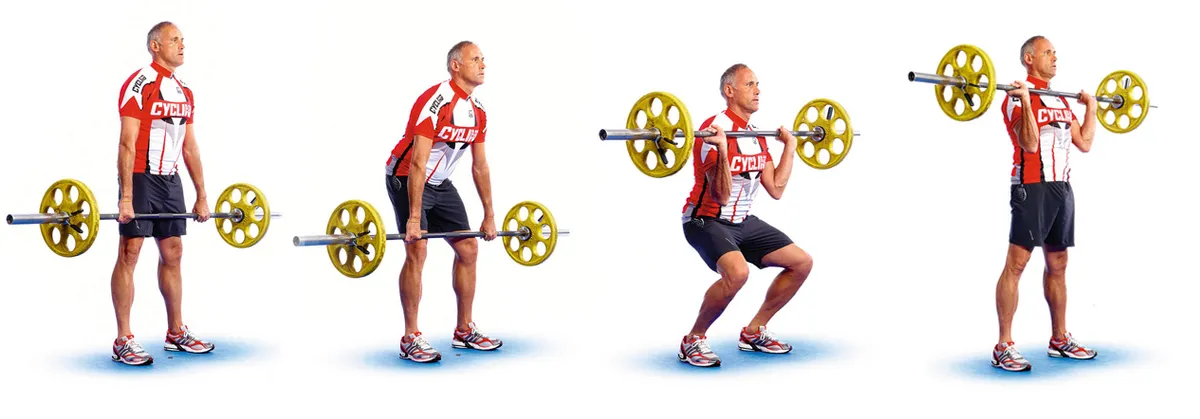
With a strong base and your feet a shoulder width apart, hold the bar just above your knees. Drop the bar a little, bend your knees slightly, then thrust your elbows under the bar, forward and drive up to the finish position, where you can include a small jump. Seek advice if you’re unsure and practise the technique with a light bar bell initially.
Alternate hip thrust
Boosts muscles used on out-of-saddle climbs
3-5 sets x 20-30 reps
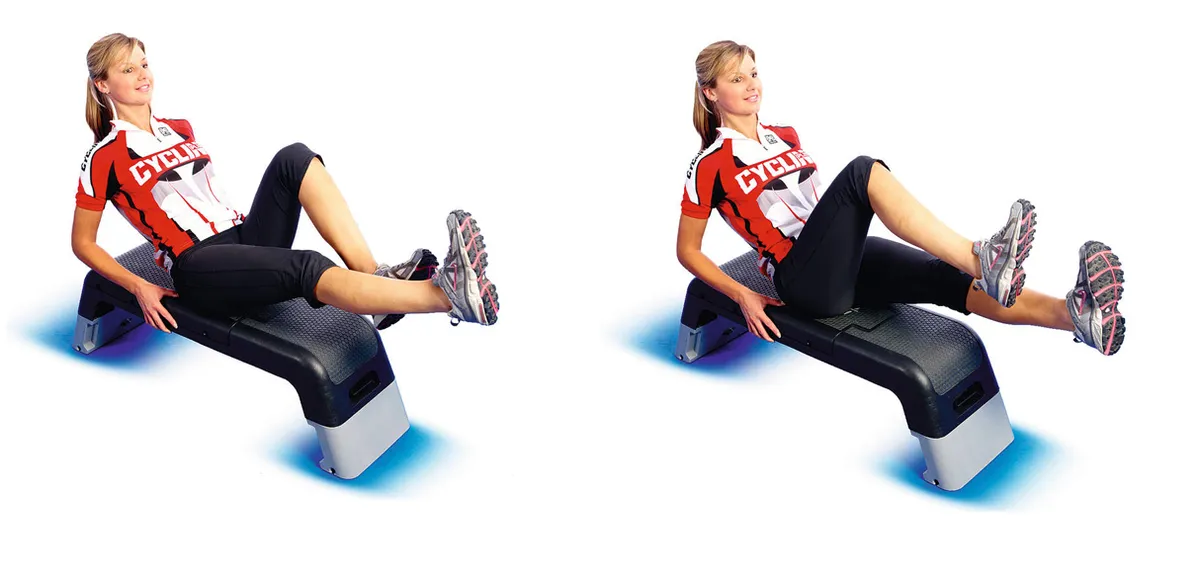
Sitting on a bench with your hands supporting you, raise your legs and perform an alternate leg cycling action, ensuring that your toes are pulled towards your body on the straightening leg. You should try to maintain a straight back throughout this exercise.
Lumbar hyperextension on ball
Boosts back extensor strength to aid your riding position
3-5 sets x 15 reps

Lie on your front on a ball – or a mat – with your arms crossed over your chest and hands on your shoulders. Keeping your head position neutral, look forward, gently arch yourself backwards using your lower back, then return to the start position.
Abdominal ball thrust
Boosts abdominal power and core control, plus upper arm strength
3-5 sets x 10 reps

You'll need a partner for this. Sit in the crunch position and hold a light medicine ball above your head with your arms outstretched. Holding the ball, keep your arms above your head and lower yourself to the floor behind you. Then perform a sit-up and throw the ball from your chest to your partner. They should then return the ball to you.
Single leg step-up
Boosts hip and quad power
3-5 sets x 20-30 reps

Holding light weights, step up onto a step. Maintain good spinal position and form, pushing up quickly through the stepping movement. Now lower yourself slowly using the same leg.
Russian twist
Boosts core muscle control, plus abdominal and hip flexor strength
3-5 sets x 20-30 reps
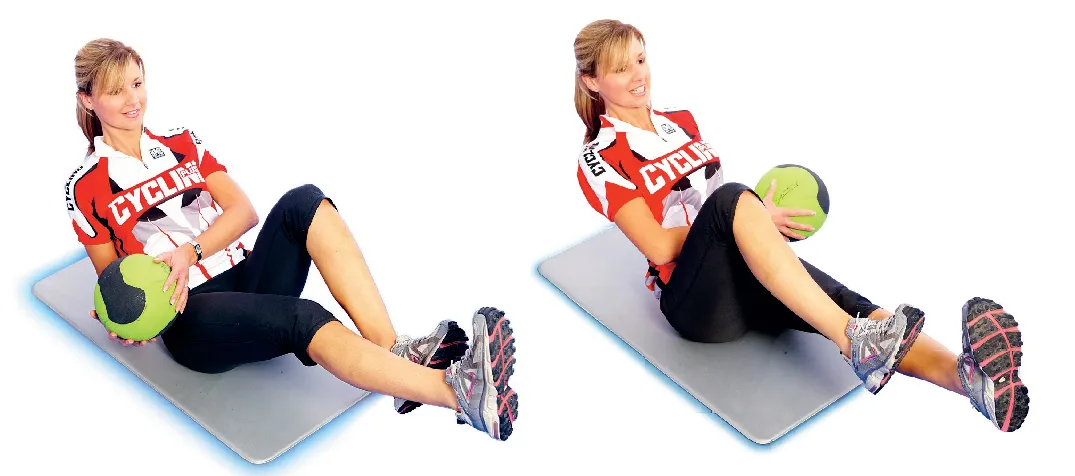
Sit in the crunch position holding a small medicine ball. A good starting weight would be 2-6kg. Rotate your trunk while holding the ball, but try to maintain a straight back. At the same time, perform a cycling action by straightening your leg in the direction of rotation.
Lunge
Boosts leg strength
3-5 sets x 20-30 reps
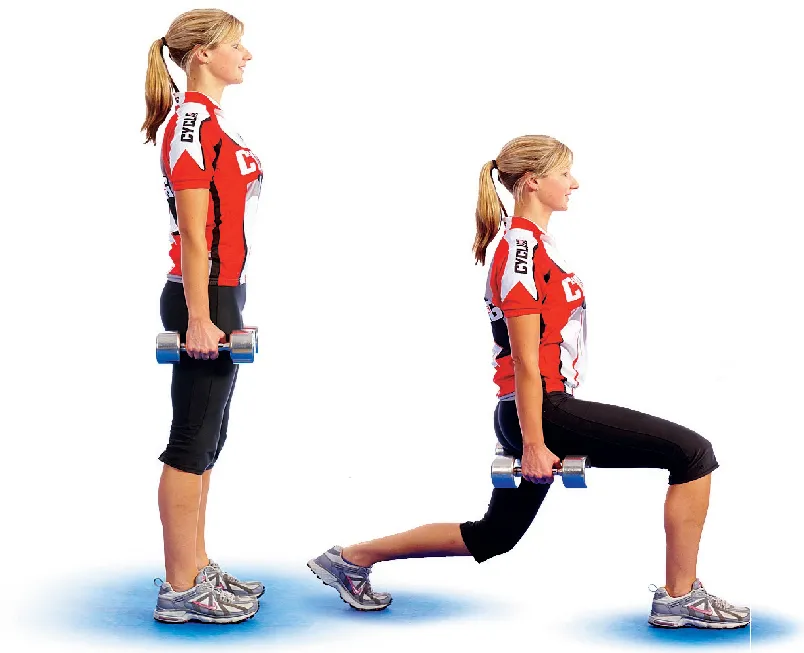
Standing upright and holding a light weight, step forward, transferring your weight over the foot you’ve just planted. As you move forward and back, try to keep your hip, knee and foot in line. You should also alternate the leg you step forward on.
Split squat
Boosts both quads and gluteal muscles as well as improving balance and core control
3-5 sets x 6-10 reps; for more power, use heavier weights and fewer reps
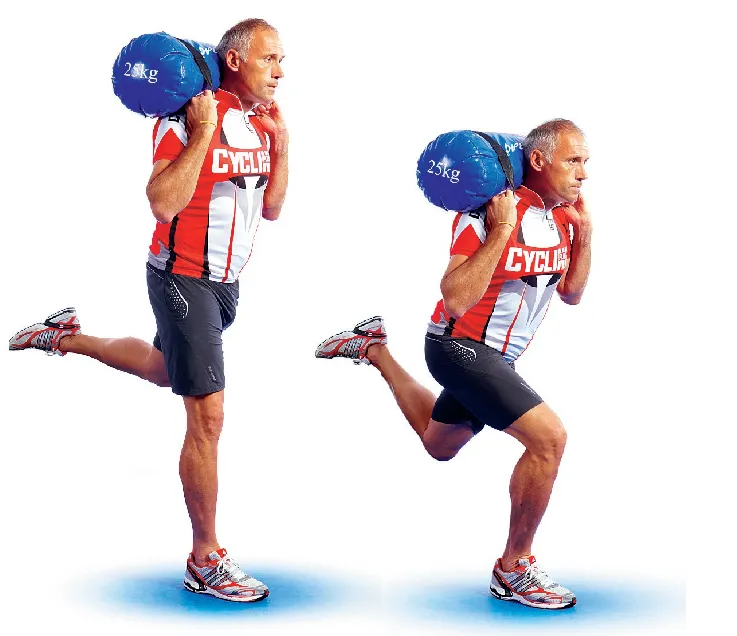
Holding a moderate weight on your shoulders (sand bag weights are perfect), place one foot behind you on a step. Keeping your body straight and your hip, knee and foot in line, slowly lower yourself up and down using the leg you’re standing on.
Squat jump
Boosts explosive properties of the lower leg, great for sprinting
3-5 sets x 20-30 reps
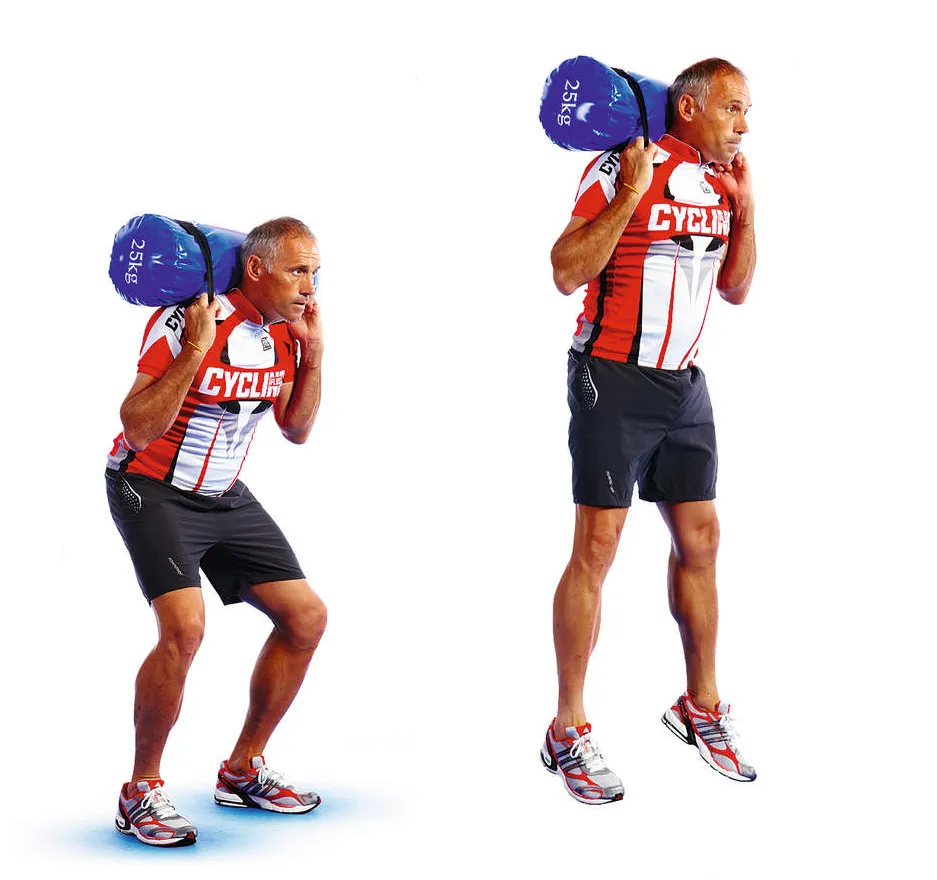
Holding a moderate weight sand bag, or bar bell, across the shoulders, maintain a straight back and perform a slow squat. Then explode up, propelling yourself through your toes.
Short circuits
If you only have time for one strength session a week, you can’t go far wrong with a circuit training workout. These can be done as part of a class at the gym or even in your own home.
Typically, circuit training involves a 30-second bout of bodyweight exercises, including press-ups, squat thrusts, jump squats, tricep dips, sit-ups, lunges, medicine ball overhead thrusts, split squats, squat presses with a medicine ball, alternate leg hip thrusts on a bench or single leg step-ups.
Carry out one of the exercises we’ve listed before moving onto the next. Once you’ve finished a circuit, rest for three to five minutes and then repeat once or twice more. When you’re comfortable with three circuits, add 15 seconds to each exercise, until you reach one minute in length. Circuits boost strength, but also help improve your cardiovascular fitness.
Row to nowhere
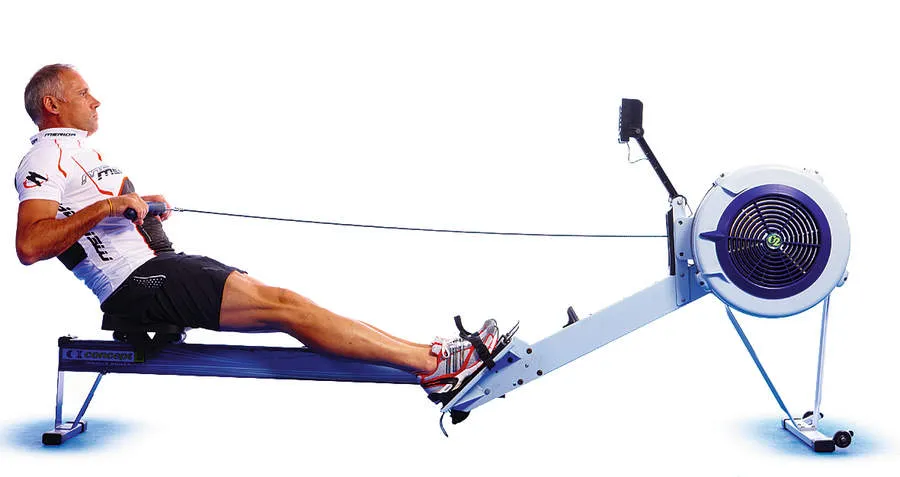
A rowing machine provides one of the best all over workouts around. It builds arm, leg and core strength, and boosts your endurance. Most gyms and health clubs have them, typically a Concept 2, but to get the most from a machine, you need to set it up correctly.
Aim for a drag factor (DF) of between 115 – for beginners – and 125 if you’re strong. Most modern machines have a scale of 1-10 on the fan at the side and it’s tempting to ramp it right up to 10, but don’t. Even Team GB’s heavyweight rowers only use a DF of 135, which is around level 6, so levels 2-5 are more than enough.
Just as important is your stroke count – aim to keep your strokes per minute (SPM) at around 28 for easy, steady state workouts. If you do increase the resistance, then drop your SPM down as low as 20 for a more high-end strength workout.
With thanks to Fitness First in Poole.
